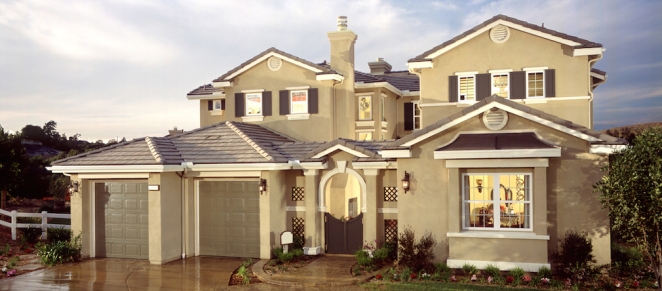
By Shane Thompson, Asset Vu Real Estate Brokerage, Roseville, CA
In the years leading up to the housing bust of 2008 the average size of homes being built and sold went up substantially. From the year 2000 to 2007 the average home size within the Western United States went up by more than 12% in gross living area. If you were to extract data for only the Greater Tri-Counties Area (Placer, Sacramento, El Dorado) this numeric value would be closer to 23%. This is a huge number and the driving force behind it was consumer confidence coupled with access to easily obtainable high loan-to-value ratio purchase funding. People felt good about buying big too. It was an ego boost for some who were walking into large-scale tract homes with price tags in some cases breaching the million dollar mark. For some buying big was a symbol of success.
Before I get too far ahead of myself let’s discuss the term McMansion. McMansion refers to homes that are considered ostentatious and lacking in architectural integrity. They don’t adhere to design characteristics of any particular style and usually consist of less expensive building materials. It is common to see these homes clad in siding or stucco. For builders this was great because their construction cost was reasonably low while the per unit selling price was high. These were nothing like design appropriate custom-built homes outside of the fact that they were large and had many upper-end surface treatments on the interior to give them a more luxurious appearance. During the early 2000’s I can remember seeing many McMansion style tract developments go up that were situated closely to custom home developments where the average selling price was already high. This provided the developer with comparable sales figures for their project.
In today’s real estate environment there are much fewer buyers who are out shopping for high budget real estate. The reason for this results from tighter lending pr actices, average household assets, and trending consumer budgeting practices. That being said we have seen a substantial drop in the average home size being built and purchased today. Many of today’s developments are now multi-family style communities such as courtyard homes, town-home projects, and small to moderately sized detached single family homes. These developments are much more affordable for buyers and builders can turn each unit fairly quickly due to the lower final selling prices.
actices, average household assets, and trending consumer budgeting practices. That being said we have seen a substantial drop in the average home size being built and purchased today. Many of today’s developments are now multi-family style communities such as courtyard homes, town-home projects, and small to moderately sized detached single family homes. These developments are much more affordable for buyers and builders can turn each unit fairly quickly due to the lower final selling prices.
Many families are on a mission to find financial freedom. The latest recession was a wake up call that shed light on just how unstable things like employment, income, and investment based retirement assets can be. That said we are seeing a huge wave of buyers who are seeking to downsize. We are not just talking about retirees here either. Many young families are downsizing to manage tighter budgets allowing them more financial freedom. This is a huge trend right now that may be here to stay.
It was almost certain from the start that the architecturally non-conforming jumbo tract homes would die out like the dinosaurs. They only filled a niche when money came easy and homes couldn’t be built fast enough. Will their time come again? Who knows, but I don’t think it will be any time soon. Don’t get me wrong, these homes still sell, but the number of buyer prospects are so much lower now that it has really discouraged a lot of builders from building these developments in our area. A bigger footprint means more land is needed to build each unit. Being that a developers goal is to make money another project type would almost certainly be more advantageous.
If you have questions about a particular housing development or anything relating to the purchase or sale of real estate feel free to contact the author directly at: (916)223-8119 or shane@assetvu.com.
Asset Vu Real Estate Brokerage is licensed by the CA BRE – ID 01803537